explore
Andean Highlands - Religion
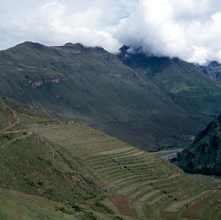
The growing dependence on early agriculture before 800 B.C. produced new concerns with the cosmos and religion. Ancient Andeans believed that nature was conscious, and aware of human actions. They thought pious human behaviour could lead to pleasant climates and good crops, while sacrilegious attitudes provoked the rage of the gods, and brought devastation such as droughts, volcanic eruptions, and earthquakes.
Veneration of Pacha Mama (mother earth) likely began at this time. Uncertainties about rain and crop failure prompted worship of the towering apu, prominent mountain peaks believed to have spiritual forces.
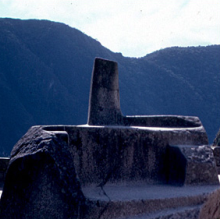
The Inka veneration of natural forces represents centuries of tradition, and was a product of Andean peoples' sacred relationship with the landscape. They carved terraces in mountain slopes, worshipped at rock shrines, and built cities atop mountain peaks. The ancient Andeans surmounted the challenges of their landscape but also desired to live in harmony with it.
Image: Located at the heart of Machu Picchu is the Inti Huatana stone. This revered monument was viewed by the Inka as the embodiment of the forces residing within the earth.
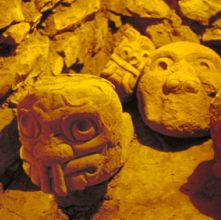
Pilgrimages were carried out from early times. People traveled to consult oracles, for instance those at Chavín, and Pachacamac, and visited temples or worshipped the gods before a sacred natural rock. People made offerings of cloth, which were often buried or burnt.
"Feeding" temples or oracles, which occurred at Chavín, was an ancient Andean tradition. Tributes of food were left to feed the deities, in the hope of assuring rainfall, healthy crops and abundant herds while preventing earthquakes, drought and other natural disasters.
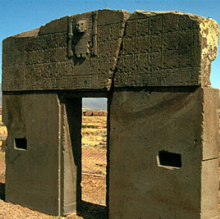
Centuries later, before the conquest of Peru by the Spanish in the 1500s, the Inka had integrated long-standing Andean traditions with new components. The Inka worshipped ancient gods and also newer Inka gods such as their creator god Viracocha and the sun god Inti.Highland Andean societies were preoccupied with life after death throughout all of their history. In tombs or special ritual chambers, the dead were buried with goods such as textiles, ceramics, precious metals and food.
Image: The Portals of the Sun at Tiwanaku, from where the Inka creator god Viracocha and sun god Inti were believed to have emerged along with the Inka people. Photograph by John Topic.
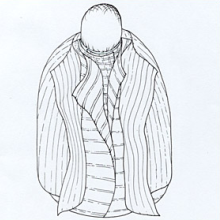
Prominent persons from Pre-ceramic to Inka times were prepared for burial in the fetal position by wrapping layers of cloth around them. Offerings of food, as well as headgear, slings, necklaces and feathers, were placed between the layers of cloth. In one instance, the cloth for a single bundle has been weighed at more than 200 kg. Living relatives often consulted the dead, believing them to be connected with the world of spirits. Sacrifices and tributes in honour of mummies were believed to help the living.

Image: This line drawing illustrates a widespread Andean custom: burying the dead wrapped in numerous layers of textiles. Grave goods were enclosed within the bundle as well.